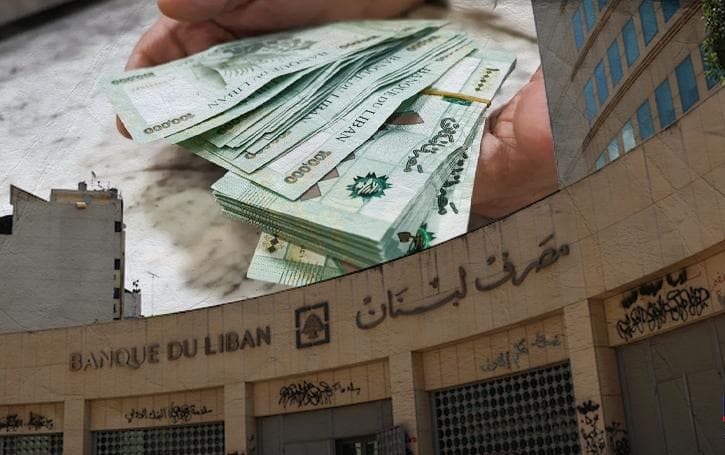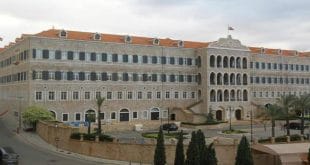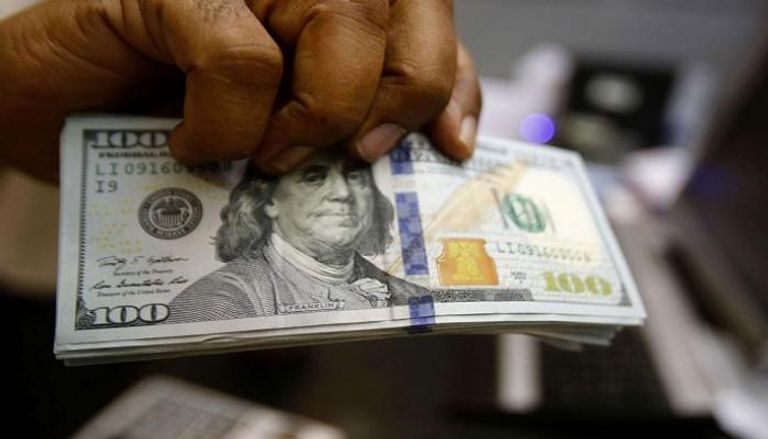بالنظر إلى الظروف الطارئة التي تمر بها البلاد، أقر المجلس المركزي لمصرف لبنان المنعقد اليوم 25 أيلول، الطلب من المصارف التسديد استثنائياً ولمرة واحدة، مبلغ يساوي 3 دفعات شهرية في بداية شهر تشرين الأول المقبل، لكافة المستفيدين من التعميمين الأساسيين رقم 158 و166.
مع الإشارة إلى أن العمل بأحكام التعميمين المذكورين يستمر في شهر تشرين الثاني بشكل طبيعي،وعليه يمكن للمستفيدين من التعميم 158 أن يتقاضوا 3 دفعات على أساس 300 دولار أي 900 دولار مطلع شهر تشرين الأول، كما يمكن للمستفيدين من التعميم 166 أنا يتقاضوا 3 دفعات على أساس 150 دولاراً أي 450 دولار لمرة واحدة فقط، فهل اصدار هذا التعميم ينسجم مع واقع الحرب الذي يعيشه اللبنانيين بشكل عام والمودعين على وجه الخصوص؟
الخبير في المخاطر المصرفية محمد فحيلي يوضح بأن التعميم ظهر بشكل بيان صادر عن المجلس المركزي لمصرف لبنان،لجهة تفعيل الإستفادة من تعاميم 158 و 166، وخلال الفترة التي يعيشها اللبنانيين أي جرعة تكون مساعدة على تغطية ولو الحد الأدنى من فاتورة الإستهلاك هي خطوة جيدة ومرحب فيها.
ويردف الفحيلي مشدداً على: «أن التعميم هو جيد بالشكل، إنما في المضمون سلبياته كثيرة، وذلك لأن هناك أربع مجموعات من المودعين هناك مجموعة تستفيد من تعميم 158 بـ400$،ومجموعة أخرى بـ 300$،وهناك مجموعة من المودعين تستفيد من التعميم 166 بموجب 150 دولار في الشهر،أما المجموعة الباقية من المودعين لا تستفيد من التعميمين وجرت العادة كانوا يقومون بعملية السحب بموجب التعميم 151 دولارهم على الـ 15000 ألف ليرة للدولار الواحد وهؤلاء في الوقت الحالي لم يعد يستلمون رواتب «فرش» فقط بسبب الأرصدة الصغيرة التي يمتلكونها في حساباتهم واستنفذوها بشكل عام».
ويعتبر أن المساوات بين كل هذه المجموعة من المودعين بجرعة من السيولة المتساوية أمر ضروري،باعتبار أنهم يواجهوا الأزمات نفسها إن كانت على صعيد أزمة التضخم،أم الأزمة المعيشية نفسها التي يعيشها لبنان، والغلاء نفسه في سلة الإستهلاك، فكان بالاستطاعة أن ينص التعميم على أن «كل المودع يستطيع أن يتقاضى 1200 دولار استثنائياً ولشهر واحد لا غير»، وهذا أمر باستطاعة مصرف لبنان والمصارف الباقية أن تقوم به.
ويشير إلى أن الخطأ كان أن يتقاضى البعض 450$، من دون ذنب والبعض الآخر 900$ أما مجموعة أخرى 1200$،أما الباقي فلا زالوا منتظرين مصرف لبنان أن يقوم بإجبار المصارف على أن يدفعوا دولارهم على الـ89500 مثلما تم تحديده في تعميم مصرف لبنان الأساسي رقم 167 الصادر بـ2 شباط 2024.
ويشدد على أنه بالرغم من ايجابيات هذه الخطوة،ولكن كان هناك خطوات أخرى مصرف لبنان كان قادراً أن يتخذها وتكون تداعياتها ايجابية أكثر على صعيد المودعين،اما في المقلب الآخر فهناك قسم من المودعين الذين طالبوا بالاستفادة سواء من تعميم 158 بعد التعديلات التي أجريت عليه ومن التعميم 166 لا وزالوا بانتظار موافقة مصرف لبنان على هذا الأمر ولكن هناك احتمال من أن يستفيدوا، واحتمال بأن لا يستفيدوا من هذه الجرعة الإضافية التي أعطاها المصرف المركزي.
ويختم فحيلي:»كان من الأجدى على مصرف لبنان أن يأخذ قرار بتسريع الموافقة على هذه الطلبات،لأن المودعين بحاجة إلى الإستفادة قدر المستطاع من هذه الجرعة التي أقرها المجلس المركزي لمصرف لبنان،أما فيما يتعلق بأصحاب الإرادات بالدولار «الفرش» فبعدما تم التأقلم مع المتغيرات الإقتصادية بات جزءاً كبيراً من القطاع الخاص اليوم عادوا ليتقاضوا رواتبهم بالدولار تماماً كما كان الحال في العام 2018، لذلك هذه الجرعة الإضافية من التعاميم 158 و166 ستذهب حكماً إلى التخزين، وللذين يعيشون من هذه التقديمات بموجب هذه التعاميم هم الوحيدين الذين سيستخدمون المبالغ الإضافية لتمويل فاتورة الإستهلاك لذلك لم يكون لها أي تأثير على سعر الصرف لأنه من المؤكد أن هذه المبالغ الإضافية لم تستعمل للمضاربة في السوق المحلي ولن يكون لها تأثير اقتصادي كبير لأن المبلغ صغير بحد ذاته اضافة بأن هذه المبالغ ستذهب إلى التخزين وليس لتمويل أي نشاط اقتصادي معين».
المصدر: عبدالرحمن قنديل – اللواء
### Lebanon's Central Bank Approves Three Payments for Depositors: Is This Decision in Line with the Ongoing War?
In light of the current emergency conditions in Lebanon, the Central Council of the Lebanese Central Bank convened on September 25, approving a one-time exceptional payment equivalent to three monthly installments for all beneficiaries of the basic circulars No. 158 and 166. This payment will commence at the beginning of October 2024.
The implementation of the aforementioned circulars will continue normally through November. Beneficiaries of Circular 158 will receive three payments based on $300, totaling $900 at the start of October. Meanwhile, those benefiting from Circular 166 can expect to receive three payments based on $150, totaling $450 as a one-time payout. This raises the question: does the issuance of this circular align with the realities of war that Lebanese citizens, particularly depositors, are experiencing?
Banking risk expert, Mohamed Fihili, explains that the circular serves as a statement from the Central Council to activate the benefits from Circulars 158 and 166. Given the current struggles faced by Lebanese citizens, this step is seen as a much-needed aid to help cover at least a minimum portion of their consumption expenses.
Fihili emphasizes that while the circular is positive in form, it has many underlying negatives. There are four groups of depositors: one group benefits from Circular 158 at $400, another at $300, and a third group benefits from Circular 166 at $150 per month. The remaining group of depositors does not benefit from either circular, as they were used to withdrawing funds under Circular 151, which allowed them to access their money at an exchange rate of 15,000 LBP to the dollar. Currently, they do not receive “fresh” salaries due to the small balances they hold in their accounts, which have been depleted.
He argues that equitably distributing a cash injection among all these groups of depositors is crucial since they all face similar crises, such as inflation, living standards, and the rising costs of consumer goods. He suggests that the circular could have specified that “all depositors could exceptionally receive $1,200 for one month only,” which is feasible for the Central Bank and other banks to implement.
Fihili notes that the issue lies in some depositors receiving $450 without justification, while others get $900, and another group receives $1,200. Meanwhile, many are still waiting for the Central Bank to compel banks to pay their dollars at the exchange rate of 89,500 LBP, as stipulated in Circular No. 167, issued on February 2, 2024.
Despite acknowledging the positives of this decision, Fihili insists that there were other actions the Central Bank could have taken that would have had a more favorable impact on depositors. Additionally, some depositors are still waiting for approval from the Central Bank to benefit from the amendments to Circular 158 and Circular 166. There is a possibility they may or may not benefit from this additional injection provided by the central bank.
In conclusion, Fihili argues that it would have been wiser for the Central Bank to expedite approvals for these requests since depositors need to benefit as much as possible from the injection approved by the Central Council. Regarding depositors receiving their salaries in “fresh” dollars, many in the private sector have adapted to economic changes and are now receiving their salaries in dollars, similar to the situation in 2018. Therefore, this additional injection from Circulars 158 and 166 is likely to be hoarded rather than utilized, as those living off these benefits will be the only ones using the extra amounts to cover their consumption bills. This will have little effect on the exchange rate, as it is evident that these additional funds are not being used for speculation in the local market and will not have a significant economic impact due to their relatively small amount and tendency to be hoarded rather than spent on economic activities.
translated by economysopes team
 سكوبات عالمية إقتصادية – EconomyScopes إجعل موقعنا خيارك ومصدرك الأنسب للأخبار الإقتصادية المحلية والعربية والعالمية على أنواعها بالإضافة الى نشر مجموعة لا بأس بها من فرص العمل في لبنان والشرق الأوسط والعالم
سكوبات عالمية إقتصادية – EconomyScopes إجعل موقعنا خيارك ومصدرك الأنسب للأخبار الإقتصادية المحلية والعربية والعالمية على أنواعها بالإضافة الى نشر مجموعة لا بأس بها من فرص العمل في لبنان والشرق الأوسط والعالم




